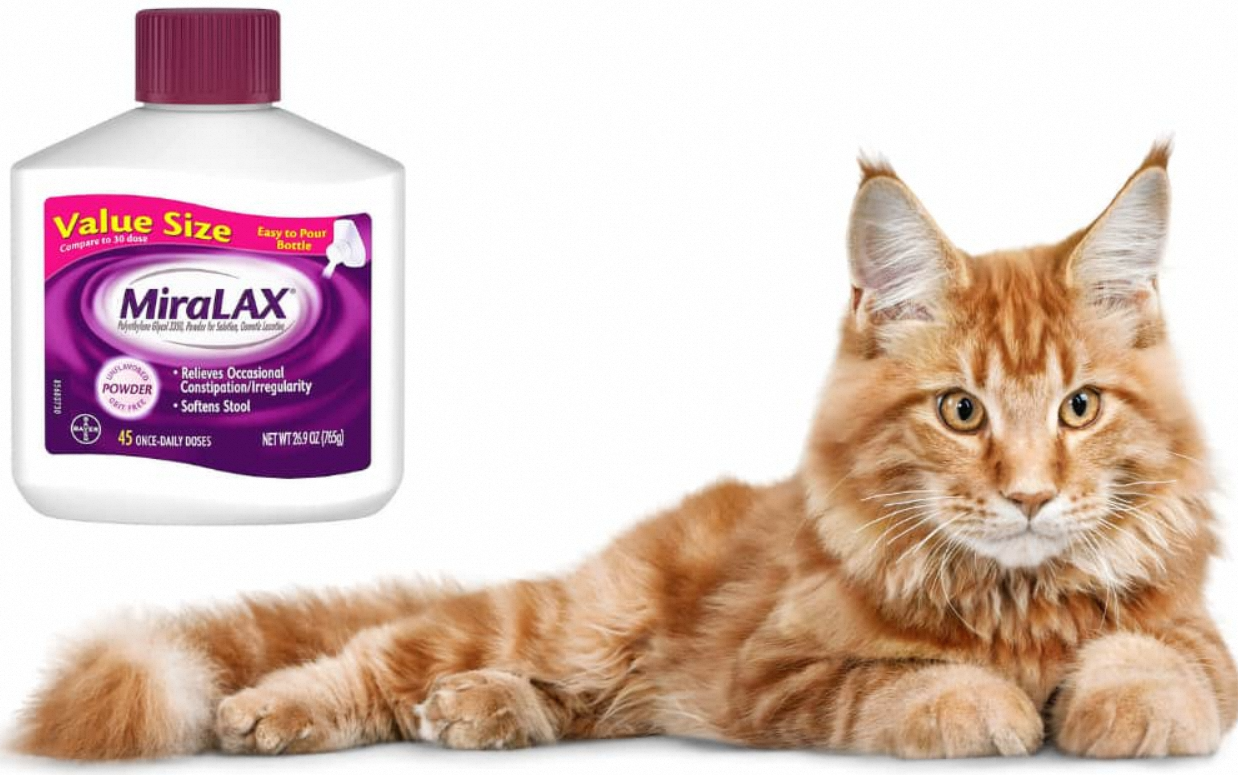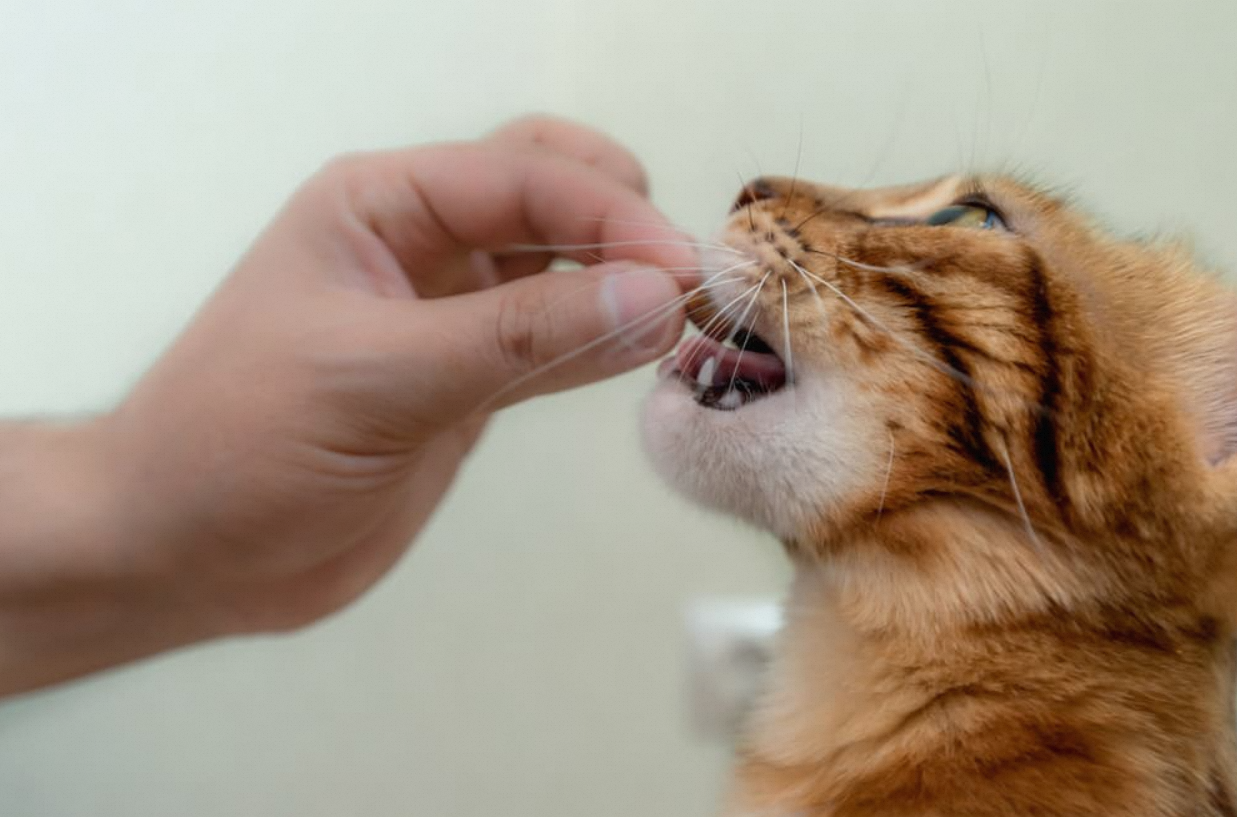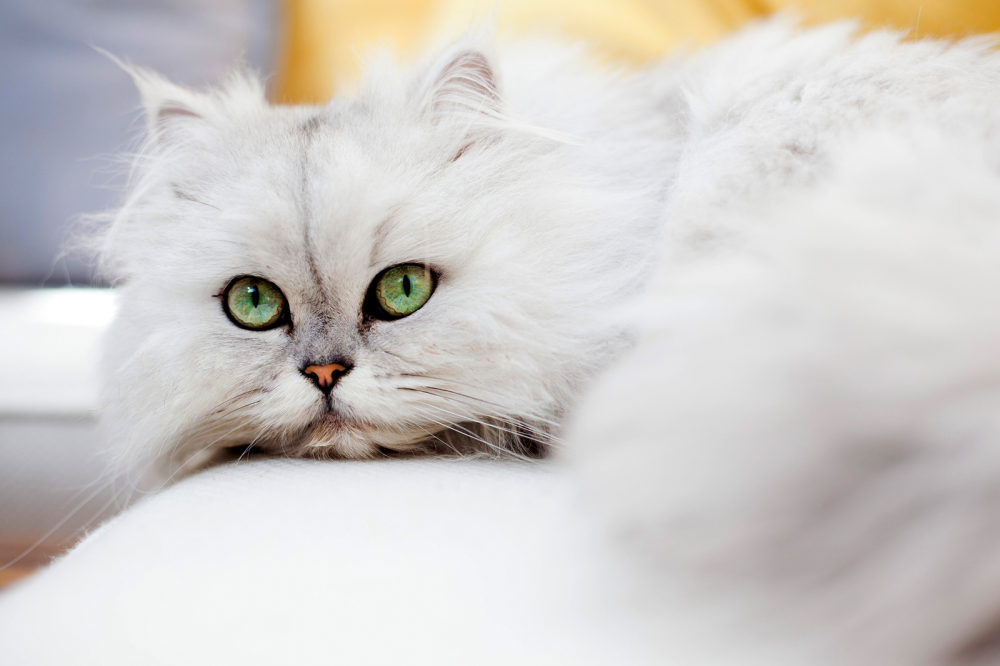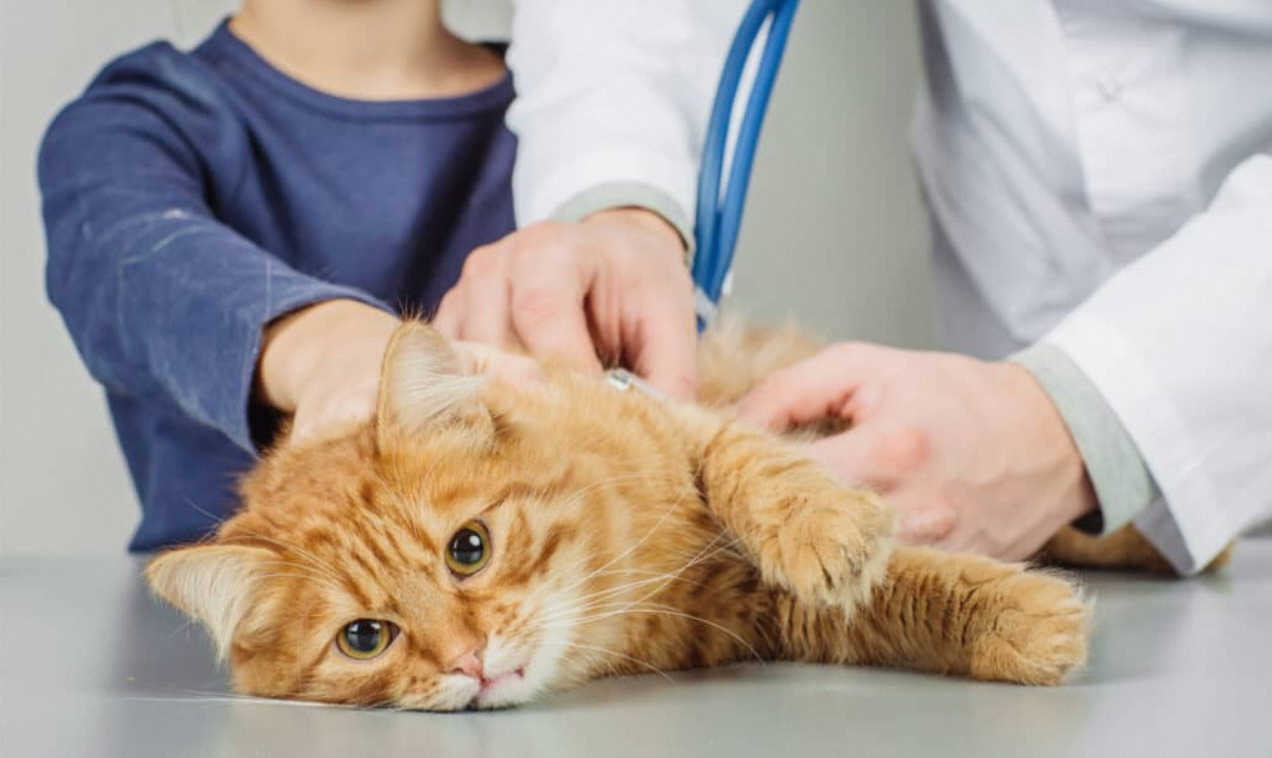Miralax (polyethylene glycol) is a laxative commonly used for humans to treat constipation. Also, the human medication can be used for the treatment of constipation in cats. In this article, we will explore the use of Miralax for cats, including its dosage, side benefits and precautions.
In This Article
About Miralax for cats
Miralax is a brand name for the medication polyethylene glycol, which is commonly used as a laxative in humans. While it is not specifically designed for cats, veterinarians may prescribe it off-label for feline constipation.Polyethylene glycol works by drawing water into the intestines, which helps to soften the stool and promote bowel movements. It is a osmotic laxative, meaning it increases the water content in the bowel, making the stool easier to pass.
 When a cat is constipated, the stool becomes hard and dry, making it difficult to pass through the digestive system. Miralax helps to rehydrate the stool, making it softer and easier to eliminate. By increasing the water content in the intestines, Miralax can alleviate constipation and restore regular bowel movements.
When a cat is constipated, the stool becomes hard and dry, making it difficult to pass through the digestive system. Miralax helps to rehydrate the stool, making it softer and easier to eliminate. By increasing the water content in the intestines, Miralax can alleviate constipation and restore regular bowel movements.
While Miralax can be beneficial for some cats with constipation, it is essential to address the underlying cause of the constipation as well. Lifestyle changes, dietary adjustments, and additional treatments may be recommended to prevent future episodes of constipation.
Proper Dosage and Administration
Proper dosage and administration of Miralax for cats should be determined by a veterinarian, as they will take into account the cat’s weight, overall health, and specific needs. It is important to follow their instructions carefully to ensure the safe and effective use of Miralax.
Here are some general considerations regarding dosage and administration:
- Veterinary Consultation: Always consult with a veterinarian before administering Miralax to your cat. They will evaluate the cat’s condition and provide specific dosage instructions based on their professional judgment.
- Individualized Dosage: The appropriate dosage of Miralax for cats can vary depending on factors such as weight, age, and severity of constipation. Veterinarians may recommend a starting dosage and adjust it as necessary based on the cat’s response.
- Method of Administration: Miralax is often mixed with food or water for easy administration. Your veterinarian may provide instructions on the preferred method and ensure that the cat receives the proper dose.
- Timing and Frequency: The timing and frequency of Miralax administration will be determined by the veterinarian. It is important to adhere to the recommended schedule to maintain consistent relief from constipation.
- Monitoring and Adjustments: Regular monitoring is crucial during Miralax treatment. Observe your cat’s bowel movements, overall comfort, and any potential side effects. If there are concerns or if the constipation persists, contact your veterinarian, who may adjust the dosage or recommend additional measures.
 Remember, dosage and administration instructions may vary depending on the individual cat’s needs. It is essential to follow the veterinarian’s guidance closely and avoid adjusting the dosage without their approval. Open communication with your veterinarian throughout the treatment process is key to ensuring the cat’s well-being and the effectiveness of Miralax in relieving constipation.
Remember, dosage and administration instructions may vary depending on the individual cat’s needs. It is essential to follow the veterinarian’s guidance closely and avoid adjusting the dosage without their approval. Open communication with your veterinarian throughout the treatment process is key to ensuring the cat’s well-being and the effectiveness of Miralax in relieving constipation.
Side Effects of Miralax for Cats
While Miralax (polyethylene glycol) is generally considered safe for cats when used under veterinary guidance, there is a potential for side effects. Although rare, it is important to be aware of these potential side effects and monitor your cat during Miralax treatment.
Miralax works by drawing water into the intestines, so it is important to ensure that your cat stays adequately hydrated during treatment. However, in some cases, excessive fluid loss may occur, leading to dehydration. Monitor your cat’s water intake and look for signs of dehydration, such as excessive thirst, dry gums, lethargy, or reduced urine output.
 While rare, some cats may experience abdominal discomfort or pain while taking Miralax. Signs of discomfort can include restlessness, vocalization, hunching, or reluctance to be touched in the abdominal area. Also, Miralax can occasionally cause diarrhea in cats. If you notice loose stools, increased bowel movements, or watery stool consistency, it may indicate a response to the medication. Contact your veterinarian if diarrhea persists or worsens.
While rare, some cats may experience abdominal discomfort or pain while taking Miralax. Signs of discomfort can include restlessness, vocalization, hunching, or reluctance to be touched in the abdominal area. Also, Miralax can occasionally cause diarrhea in cats. If you notice loose stools, increased bowel movements, or watery stool consistency, it may indicate a response to the medication. Contact your veterinarian if diarrhea persists or worsens.
Alternative Treatments and Preventive Measures
In addition to Miralax, there are alternative treatments and preventive measures that can help with cat constipation. These options can be used either alongside or instead of Miralax, depending on your cat’s specific needs and veterinarian’s recommendation. Here are some alternative treatments and preventive measures to consider:
Increased Fiber Intake: Adding more fiber to your cat’s diet can help promote regular bowel movements. This can be achieved through specialized high-fiber cat foods, canned pumpkin (not pumpkin pie filling), or soluble fiber supplements recommended by your veterinarian.
Hydration: Ensuring your cat is well-hydrated is important for maintaining healthy bowel function. Provide fresh water at all times and consider incorporating wet food into their diet, which has a higher water content than dry kibble.
 Exercise and Activity: Regular exercise can help stimulate the digestive system and encourage bowel movements. Engage your cat in play sessions, provide interactive toys, and create an environment that encourages physical activity.
Exercise and Activity: Regular exercise can help stimulate the digestive system and encourage bowel movements. Engage your cat in play sessions, provide interactive toys, and create an environment that encourages physical activity.
Laxatives or Lubricants: Your veterinarian may recommend alternative laxatives or lubricants if Miralax is not suitable for your cat or if additional support is needed. These may include stool softeners, mineral oil, or other veterinary-prescribed medications.
Regular Grooming: Regular brushing and grooming can help reduce the amount of hair ingested by your cat, potentially minimizing the formation of hairballs and the associated risk of constipation.
Remember, prevention is key. By incorporating these preventive measures into your cat’s routine, you can help minimize the occurrence of constipation and improve their overall digestive health.